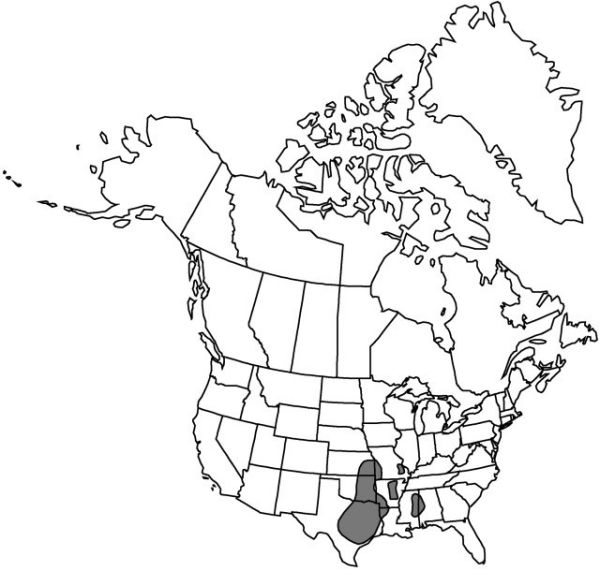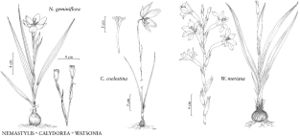Nemastylis geminiflora
Trans. Amer. Philos. Soc., n. s., 5: 157. 1837.
Plants slender, 12–40 cm. Bulbs 20–30 mm diam. Stems sturdy, usually branched, mainly from base. Leaves usually 3; blade linear to ensiform, usually exceeding rhipidia, 4–20 mm wide. Rhipidia usually 2-flowered; outer spathe 20–35 mm, inner 30–55 mm, apex dry. Tepals blue, white in center, white zone sometimes edged with dark blue, ovatelanceolate, 2.5–3 cm; filaments distinct or connate basally, ca. 4 mm; anthers 11–15 mm; ovary conic, 4–5 mm; style branching above base of anthers; branches 5–6 mm. Capsules ovoid, truncate, (10–) 14–20 mm. Seeds angular. 2n = 56.
Phenology: Flowering Apr–Jun.
Habitat: Woodlands, prairies, and pastures
Distribution

Ala., Ark., Kans., La., Miss., Mo., Okla., Tex.
Discussion
The flowers of Nemastylis geminiflora open midmorning and fade before sundown.
There seems to be no merit in recognizing Nemastylis texana (E. Whitehouse 1936) for plants from southern Texas, said to have steel-blue flowers, more frequently found in oak woodlands than in prairies. Reports in the literature of N. geminiflora from Tennessee appear to be incorrect, possibly based on an early record from “E. Tennessee” (Dr. Eight s.n., NY).
Selected References
None.
